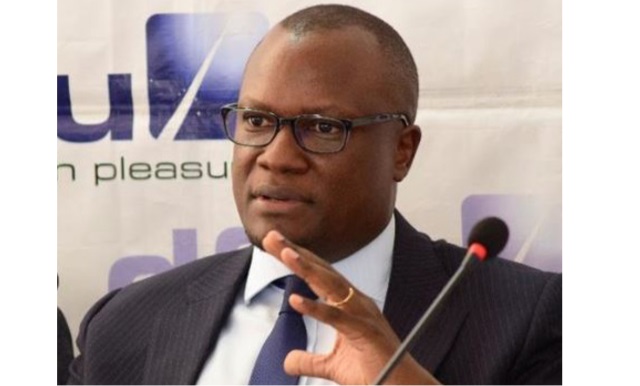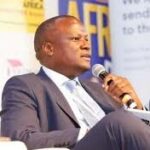The Managing Director of dfcu Mathias Katanaba has come out to say he is leaving the financial institution at the end of this month, having been fished from Housing Finance Bank and appointed to that job on October 31, 2018.
However, Katamba’s news of his imminent departure from dfcu is not surprising to those who have been watching events unfold, especially from the time the bank controversially acquired assets of its rival, the then Crane Bank Limited (CBL).
It should be remembered that Katamba replaced Juma Kisaame, who among other dfcu executives controversially acquired CBL assets in January 2017, paying only Shs 200 million to the Bank of Uganda (BoU), which had in October 2016 taken over CBL on allegations of mismanagement and undercapitalisation.
dfcu’s Crane bank acquisition immediately boosted its profitability only in 2017 with net profit nearly tripling to Shs127 billion, up from Shs46. 27 billion in 2016 and Shs 37 billion in 2015.dfcu acknowledge this in financial statements published in the local media.
In fact, watchers said then that the profits Dfcu made after acquiring CBL showed the former badly needed CBL businesswise, even as some of its officials during COSASE probe claimed that they were sort of forced to buy CBL by BoU.
In acquiring CBL, dfcu had also illegally acquired 48 branches CBL was operating in. The assets belonged to CBL sister company Meera Investments Limited, all under the Rupareria Group owned by Kampala tycoon Sudhir.
An analyst said what motivated dfcu to buy CBL assets as offered by BoU, was also indeed the 48 properties that belonged and still belong to Meera Investments Limited as per the Supreme Court ruling that dealt dfcu a financial blow and public shame as it exited the branches for the rightful owner to take over, but a huge cost, having lost the legal battle to Sudhir and Meera Investments Limited.
That aside, the controversial acquisition of CBL had also caused a crisis within dfcu that some shareholders such as CDC Group, the UK’s development finance institution, had to leave, putting its 9.97 shares on sale. Senior staff were also fighting, especially as Kisaame left, each hoping to replace him.
The instability at the time could only be solved by hiring an outside Katamba to steer the team at dfcu as it thrived on CBL assets, which some analysts say excited dfcu to the extent that the bank ended up mismanaging them, leading to a significant reduction in profits.

After hiring Katamba whose banking experience is rivalled by a few in Uganda, dfcu bank’s net profit fell 46 percent for the year 2021 to Shs13.2 billion due to the increase in non-performing This was the lowest profit ever recorded in more than a decade since 2008 when it earned Shs13.1 billion.
The lender’s NPL increased from Shs 94 billion in 2020 to Shs274 billion in 2021 as a result of negative impacts of the coronavirus pandemic.
In addition, the bad debts written off rose to Shs37.b billion from Shs13.9 billion as loan exposures increased from Shs 351 billion to Shs 480 billion during the same period.
The above statistics sent shockwaves within dfcu and the local financial sector. And as a top technocrat, Katamba’s days at dfcu started to be counted as the figures were embarrassing to the shareholders.A top BoU executive who talked to this writer on condition of anonymity said Katamba tendered in his resignation after realising he can never push back dfcu profits near those earned in to 2017 when it acquired CBL.
Despite being hired by the board, Katamba further had a cold reception at Dfcu as it was revealed that some authorities had sidestepped William Ssekabembe who it was rumoured to be line of leadership at the bank after the exist of Kisaame. However, it was a time that Ssekabembe would assume the CEO role which Katamba had been assigned to during the crisis which crisis persist to date.







